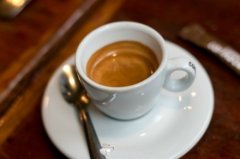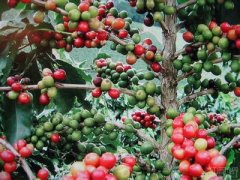The main chemical composition of raw coffee beans is carbohydrate.

Main chemical constituents of raw coffee beans:
Component content (%)
Carbohydrate 60.0
Reducing sugar 1.0
Sucrose 7.0
Pectin 2.0
Starch 10.0
Garrison polysaccharide 5.0
Hemicellulose 15.0
Holocellulose 18.0
Lignin 2.0
Important Notice :
前街咖啡 FrontStreet Coffee has moved to new addredd:
FrontStreet Coffee Address: 315,Donghua East Road,GuangZhou
Tel:020 38364473
- Prev

Coffee common sense what is the most suitable temperature for fragrant espresso
Espresso common temperature: 90.5 degrees Celsius forget who measured this temperature, may be the result of a long-term trial, just like traditional Chinese medicine, rituals and experience all play a role. If the temperature is lower than this, espresso will become sour, while higher will be bitter. This is not a casual fool. There was a time when the temperature of my coffee machine was as low as 80 degrees, es.
- Next

Fragrance is an important judgment of the quality of high-quality coffee beans
Aroma is the life of coffee quality, and it can best represent the coffee production process and baking technology, as well as the climate, elevation, variety, refined treatment, harvest, storage, and the appropriateness of baking technology in the consuming country. The aroma of coffee was analyzed by gas chromatography, which proved that it was composed of acids, alcohols, acetaldehydes, ketones, esters, sulfur compounds, phenol,
Related
- Beginners will see the "Coffee pull flower" guide!
- What is the difference between ice blog purified milk and ordinary milk coffee?
- Why is the Philippines the largest producer of crops in Liberia?
- For coffee extraction, should the fine powder be retained?
- How does extracted espresso fill pressed powder? How much strength does it take to press the powder?
- How to make jasmine cold extract coffee? Is the jasmine + latte good?
- Will this little toy really make the coffee taste better? How does Lily Drip affect coffee extraction?
- Will the action of slapping the filter cup also affect coffee extraction?
- What's the difference between powder-to-water ratio and powder-to-liquid ratio?
- What is the Ethiopian local species? What does it have to do with Heirloom native species?

